HPE ProLiant DL325 Gen10 Performance
We mentioned this previously, but the HPE ProLiant DL325 Gen10 we have is running DDR4-2933 memory speeds, not DDR4-3200. This has a slight impact on performance.
For this exercise, we are using our legacy Linux-Bench scripts which help us see cross-platform “least common denominator” results we have been using for years as well as several results from our updated Linux-Bench2 scripts. Starting with our 2nd Generation Intel Xeon Scalable benchmarks, we are adding a number of our workload testing features to the mix as the next evolution of our platform.
At this point, our benchmarking sessions take days to run and we are generating well over a thousand data points. We are also running workloads for software companies that want to see how their software works on the latest hardware. As a result, this is a small sample of the data we are collecting and can share publicly. Our position is always that we are happy to provide some free data but we also have services to let companies run their own workloads in our lab, such as with our DemoEval service. What we do provide is an extremely controlled environment where we know every step is exactly the same and each run is done in a real-world data center, not a test bench.
We are going to show off a few results, and highlight a number of interesting data points in this article.
Python Linux 4.4.2 Kernel Compile Benchmark
This is one of the most requested benchmarks for STH over the past few years. The task was simple, we have a standard configuration file, the Linux 4.4.2 kernel from kernel.org, and make the standard auto-generated configuration utilizing every thread in the system. We are expressing results in terms of compiles per hour to make the results easier to read:

Overall HPE can cover a wide range of performance scenarios with the single socket AMD EPYC 7002 series. Here, we can see a fairly wide range of core counts offered. HPE offers the EPYC 7262 in many 8-core models, and that performance is relatively close to the EPYC 7232P. Our review of that chip is in the pipeline.
c-ray 1.1 Performance
We have been using c-ray for our performance testing for years now. It is a ray tracing benchmark that is extremely popular to show differences in processors under multi-threaded workloads. We are going to use our 8K results which work well at this end of the performance spectrum.
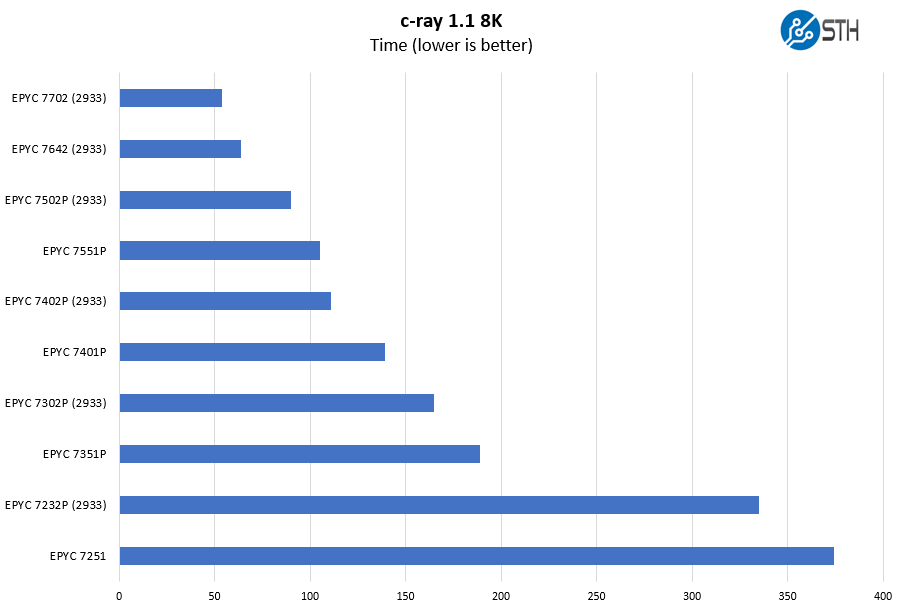
Here we added in the previous-generation AMD EPYC 7001 parts like the AMD EPYC 7401P that we use in many of our lab systems. If you compare that to the newer generation AMD EPYC 7402P you can see that AMD made significant per-core performance improvements this generation.
7-zip Compression Performance
7-zip is a widely used compression/ decompression program that works cross-platform. We started using the program during our early days with Windows testing. It is now part of Linux-Bench.
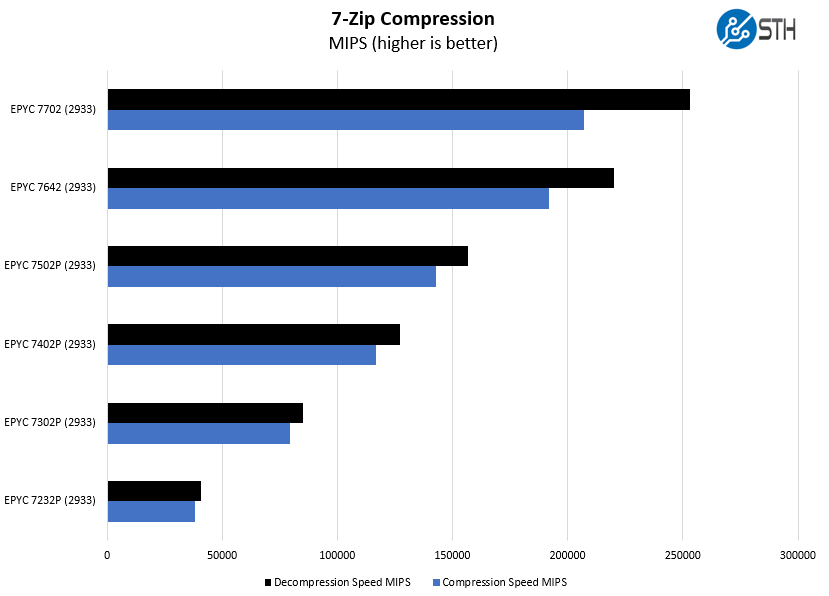
Upgrading from the EPYC 7232P to the EPYC 7302P is relatively inexpensive. We think that the only reason to not make the jump to a 16 core AMD EPYC part is if budget constraints are absolutely severe. Otherwise, we think moving up the stack from the lower core count parts makes sense.
OpenSSL Performance
OpenSSL is widely used to secure communications between servers. This is an important protocol in many server stacks. We first look at our sign tests:
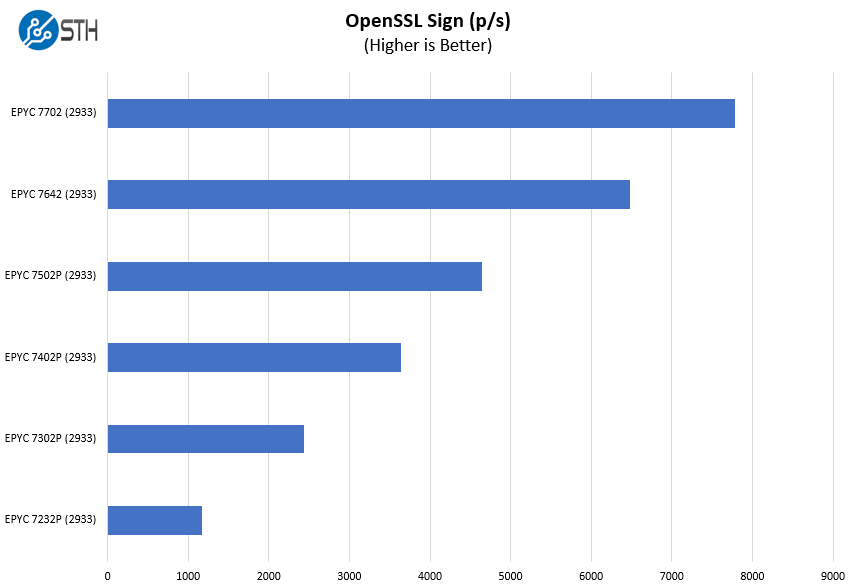
Here are the verify results:

OpenSSL continues to show a similar trend. The AMD EPYC 7402P is a popular choice in this server coming in many of the pre-configured models. It only adds a small amount of cost over the EPYC 7302P, but again adds eight more cores.
UnixBench Dhrystone 2 and Whetstone Benchmarks
Some of the longest-running tests at STH are the venerable UnixBench 5.1.3 Dhrystone 2 and Whetstone results. They are certainly aging, however, we constantly get requests for them, and many angry notes when we leave them out. UnixBench is widely used so we are including it in this data set. Here are the Dhrystone 2 results:
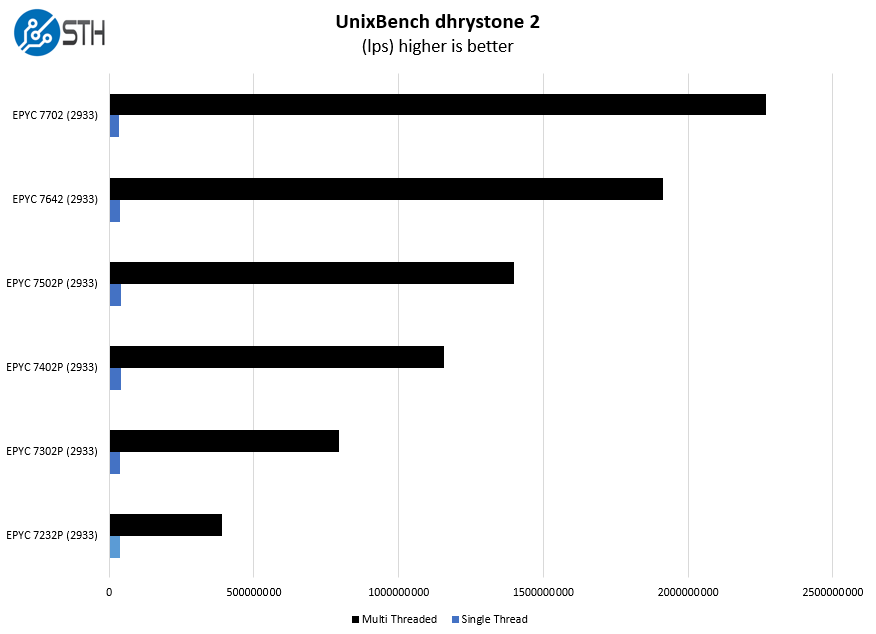
Here are the whetstone results:

If you are focused on an 8GB of memory per core ratio as many cloud providers use, using an AMD EPYC 7502P with 8x 32GB DIMMs may make a lot of sense. We think that the 512GB to 2TB configurations will mostly be 48 core CPUs like the AMD EPYC 7642 or 64 core CPUs like the AMD EPYC 7702(P).
Chess Benchmarking
Chess is an interesting use case since it has almost unlimited complexity. Over the years, we have received a number of requests to bring back chess benchmarking. We have been profiling systems and are ready to start sharing results:

Here, the higher core count 48 and 64 core SKUs show why they offer an enormous performance upgrade over the lower-core count parts. With the AMD EPYC 7002 series having around the same performance per core as Xeon Gold and Platinum, the impact of having this many cores is readily apparent.
STH STFB KVM Virtualization Testing
One of the other workloads we wanted to share is from one of our DemoEval customers. We have permission to publish the results, but the application itself being tested is closed source. This is a KVM virtualization-based workload where our client is testing how many VMs it can have online at a given time while completing work under the target SLA. Each VM is a self-contained worker.
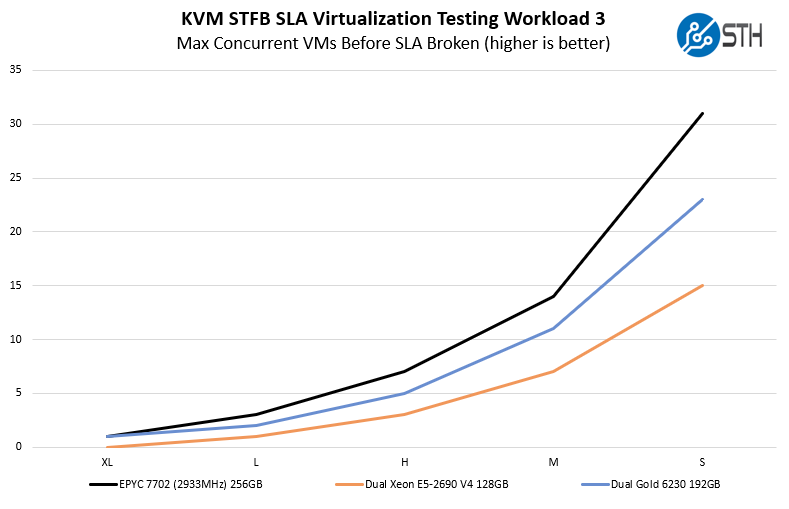
There are parts of this that are being impacted by memory as well, however, the primary constraint here is CPU speed. As you can see, the AMD EPYC 7702 is performing very well against legacy Intel Xeon E5 V4 and Intel Xeon Gold alternatives. Specifically, it is performing well against the dual-socket Intel Xeon competition. That is why the HPE ProLiant DL325 Gen10 is a single-socket server solution that is competitive with dual Intel Xeon servers.
Next, we are going to look at the power consumption before getting to our STH Server Spider and our final words.



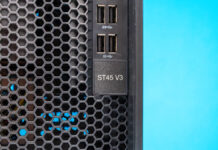
That’s a freaking thorough review if I’ve ever seen one. I wish you did the 10 by 2.5in NVMe U.2 config tho.
Any plans to review the DL385 G10?
I’m gonna pass this along to our team and we’ll probably get a test cluster going if our rep gives us a good price.
We bought a bunch of these based on reading some on the STH forums. Two things if you want to upgrade using non HPE parts –
Drives are ultra picky. Way more than Dell’s. We had some Toshibas that didn’t have HPE markings and parts but we’re the same drives and they caused 100% fan spin.
Memory has been a challenge. It is really picky and sometimes it’ll take 7 of 8 Samsung’s then not like the last one.
Sucks that HPE is actively pushing away this route
Thanks for the review. You wrote “We mentioned this previously, but the HPE ProLiant DL325 Gen10 we have is running DDR4-2933 memory speeds, not DDR4-3200. This has a slight impact on performance.” Based on your benchmarks, I canot see how much this impact would be in a virtualization environement, when you compare the same CPU once with DDR4-2933 and once with DDR4-3200. So would it be wise to wait until HPE delivers a real 7002 Epyc system with a new board (PCIe-Gen4) or would the difference be very minor?
To compare the memory bandwidth impact they would need to test with a different system that supported the higher clock then test at 3200 before locking it in the bios down to 2933 to see how much of impact there is.